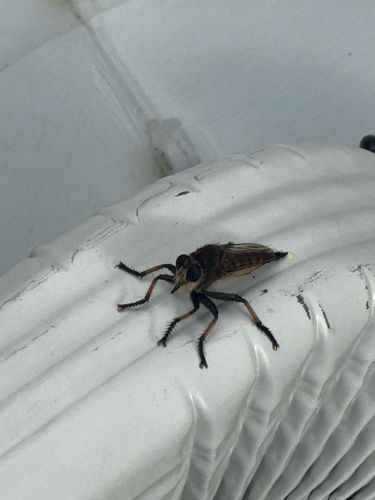Robber Fly
Scientific Name: Asilidae (family)
Order & Family: Order: Diptera, Family: Asilidae
Size: Species vary greatly in size, ranging from small flies around 5 mm (0.2 inches) to large species over 40 mm (1.6 inches) in length.

Natural Habitat
Robber flies can be found in a wide variety of habitats, including grasslands, forests, deserts, agricultural fields, and urban gardens, wherever there is suitable prey. They prefer open, sunny areas where they can perch and observe their surroundings.
Diet & Feeding
Strictly predatory. Adults feed on a wide variety of other insects, including flies, bees, wasps, butterflies, moths, grasshoppers, and even other robber flies. Larvae are also predatory, feeding on insect larvae and eggs in the soil or decaying wood.
Behavior Patterns
Robber flies are ambush predators, often perching in sunny spots on vegetation, branches, or the ground, waiting for prey to fly by. Once prey is spotted, they quickly dart out to capture it in mid-flight using their strong legs. They inject their prey with neurotoxic and proteolytic enzymes, which paralyze the prey and digest its internal contents, then suck out the liquefied tissues through their proboscis. They are strong fliers and very agile. Mating typically occurs in the air or on a perch, and females lay eggs in soil, rotting wood, or on plants, depending on the species.
Risks & Benefits
Benefits: Robber flies are highly beneficial insects as natural pest control agents. They prey on many agricultural and garden pests, helping to regulate insect populations. Risks: While generally not aggressive towards humans, a robber fly may deliver a painful bite if handled or if it feels threatened. The bite is not venomous to humans and is typically comparable to a bee sting, resulting in localized pain and swelling. They do not transmit diseases.
Identified on: 8/27/2025